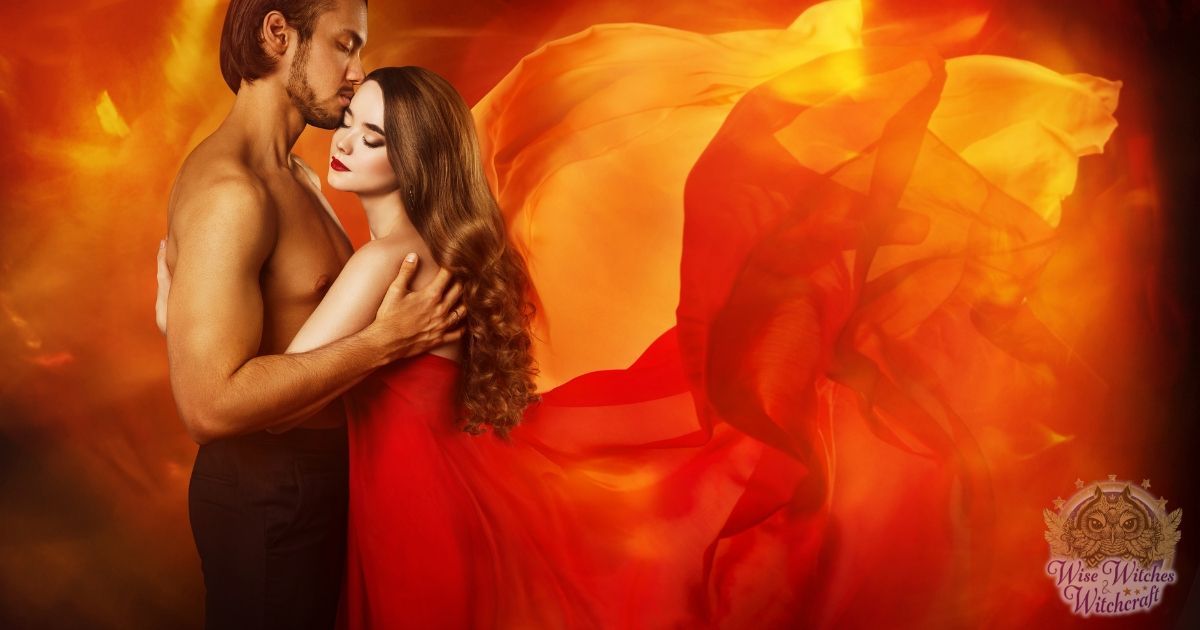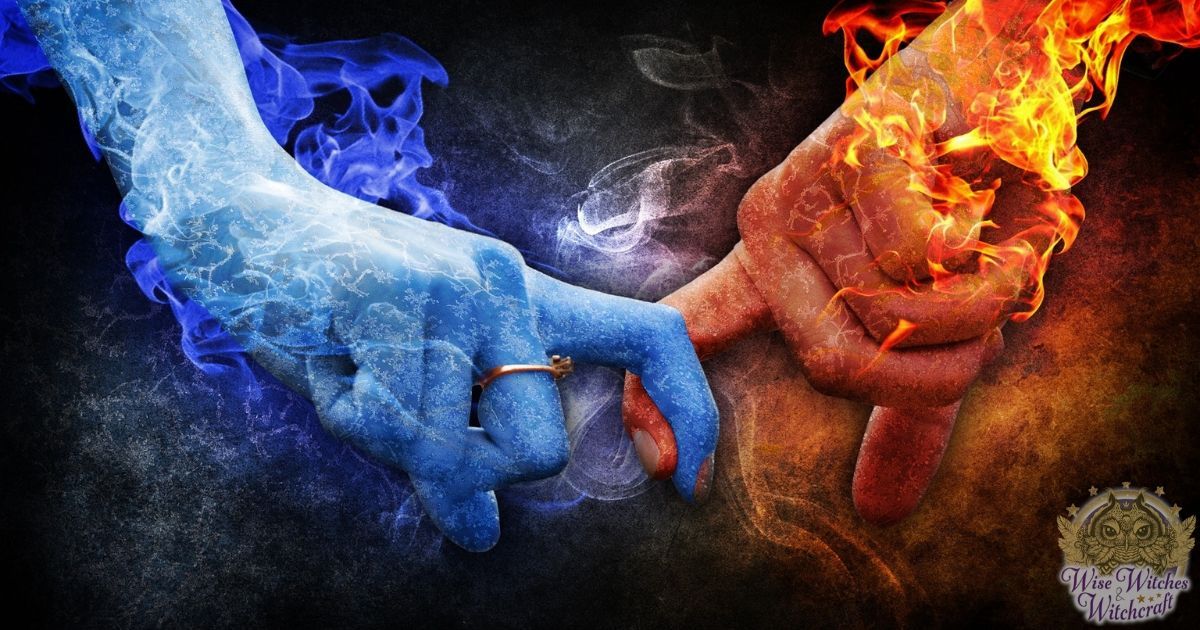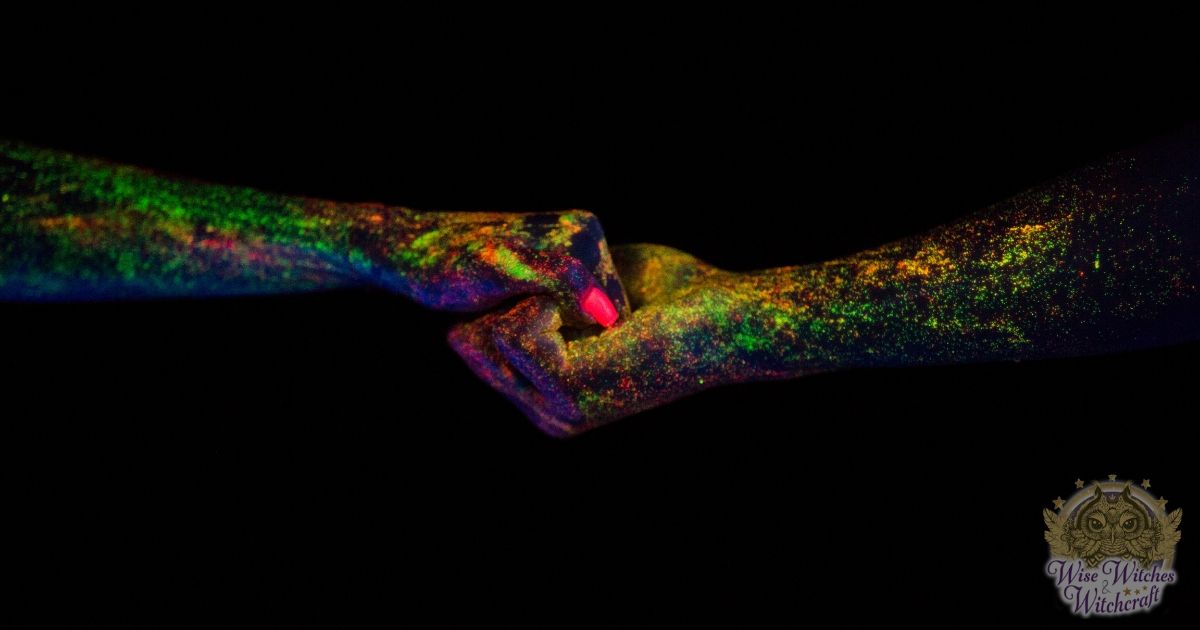Witchcraft Terms and Tools – Sex Magic

Sex magic (or sexual magic or sex magick) is a term used for various types of sexual activity used in magical, theurgical or other religious and spiritual pursuits. It is based on the premise that sexual energy or libido (and the release of sexual energy through orgasm) is the human organism’s most potent force, and that harnessing it through sexual activity provides an experiential conduit for the transcendence of reality. The level of energy generated by sexual arousal is claimed by its practitioners to create very powerful magic.

In Wicca, for example, the Great Rite involves either ritual sexual intercourse between the High Priest and High Priestess, or a ritual symbolic representation of sexual intercourse. In the symbolic version, the High Priest plunges the athame (or ritual knife, the male symbol) into a cup or chalice (the female symbol) filled with wine and held by the High Priestess. The Great Rite symbolizes creation in the union of the Maiden Goddess with the Lover God, and thus is also considered a fertility rite, and is often performed during the festival of Beltane.
Historically, “sacred prostitution” (or “religious prostitution”), the practice of having sexual intercourse for a religious or sacred purpose, was widespread across the Ancient Near East, starting perhaps in Babylon with the Sumerians. Temple prostitution was still being carried on in the Phoenician cities of Aphaca and Heliopolis until closed down by the Emperor Constantine in the 4th Century A.D. Sexual rites were a central (although by no means the only) element of traditional Indian Tantra beliefs, and were also present in some Buddhist and Ancient Egyptian religions. The ceremonial sexual union of man and woman on the land as a fertility act to ensure a good crop and a rich harvest was common in many traditional cultures. Western sex magic has its roots in Hebrew Kabbalah, and was spread further through several occult doctrines like those of the Knights Templar and the Freemasons.

Aleister Crowley was one of the first people in modern times to publicly advocate the practice of sexual magic. He rejected the prudish attitude of the Victorian era towards sex and took delight in shocking British society by explicitly including masturbation and homosexuality among his magical techniques. He believed that the suppression of the sexual instinct was the root cause of the violence and other evils of the modern world. His “Book of the Law” advocated that each individual has an absolute right to satisfy his or her sexual instinct as is physiologically proper for them, and indeed that such acts should be treated as sacraments.
The Ordo Templi Orientis, an occult brotherhood founded by Karl Kellner and Theodor Reuss at the end of the 19th Century, had from its inception included the teaching of sex magic in the highest degree. When Crowley became head of the British section of the Order in 1912, he expanded on these teachings, associating the different techniques with different degrees of initiation (e.g. masturbatory or autosexual magical techniques were taught in the Eight Degree, heterosexual magical techniques in the Ninth and anal intercourse techniques in the Tenth). He also composed one of the best-known O.T.O. rituals, the Gnostic Mass, which became a central ritual of the Order, and which was essentially a complete exposition on sexual magic in symbolic form. Crowley wrote extensively on sex magic, some of which works were published and made available to the general public, others of which were secret and could only be obtained by initiates of O.T.O.

Some teaching on sex magic, such as that of Arnold Krumm-Heller and Samael Aun Weor stress what Weor calls “white sexual magic”, involving the act of coition without orgasm or ejaculation from either the man or woman, so that the sexual energy undergoes a “transmutation” through willpower and the sacrifice of desire.
“Love Magic”, on the other hand, refers to the attempt to bind the passions of another, or to capture them as a sex object, through magical means rather than through direct activity. It can be implemented in a variety of ways such as written spells, dolls, charms or different rituals. Historically, love magic was often associated with prostitutes and courtesans, who were deemed to hold psychological power over their partners, and this sometimes led to dramatic measures such as witchcraft accusations and trials.




